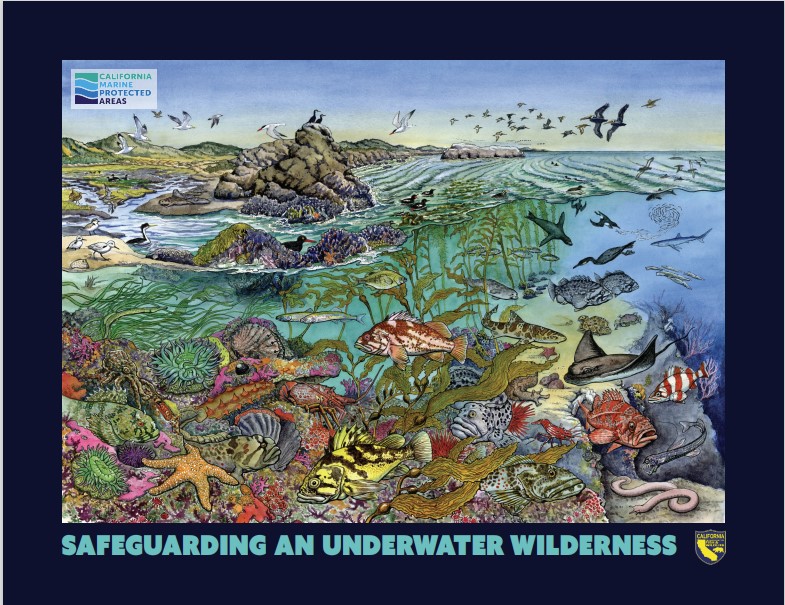Asilomar is a "no take" zone for shells, rocks or animals
Asilomar State Marine Reserve
Asilomar State Beach lies within the Asilomar State Marine Reserve which stretches from Point Joe to Point Pinos. A state marine reserve is the highest level marine protected area which means that all natural features and wildlife are legally protected here.
In a state marine reserve, it is unlawful to injure, damage, take, or possess any living, geological, or cultural marine resource, except under a permit or specific authorization from the managing agency for research, restoration, or monitoring purposes.
- No fishing or harvesting (i.e. includes kelp, mussels, abalone)
- No collecting of any natural features (i.e. rocks, shells, sand)
- Do not disturb wildlife (i.e. seals, otters, harbor.)
- Do not pick up sea life (for example: seas stars, sea anomones, crabs, etc
For a free printable information on Asilomar State Marine Reserve, visit Asilomar State Marine Reserve Brochure
Asilomar State Marine Reserve (SMR)
The Asilomar State Marine Reserve extends from the ocean side of Point Pinos to Point Joe. The amazing marine life of the Monterey Peninsula draws thousands of visitors each year to fish, dive, hike, whale watch and kayak. To learn more about activities allowed in MPA's near you, visit: https://wildlife.ca.gov/Conservation/Marine/MPAs/FAQs
What is a Marine Protected Area?
Monterey Peninsula Marine Protected Areas (MPAs) include: Asilomar State Marine Reserve, Pacific Grove Marine Gardens State Marine Conservation Area, Lovers Point State Marine Reserve, and Edward F. Ricketts State Marine Conservation Area.
What is an MPA? Marine protected areas (or MPAs) are areas designated for protection and conservation of marine life and habitat. Instead of focusing on protection of individual endangered species, marine protected areas protect our marine ecosystems as a whole. These are spaces for wildlife to rest, feed, and replenish populations with as limited human disturbance as possible.
An Underwater Park... Just as state and national parks protect wildlife and habitats on land, marine protected areas (MPAs) conserve and restore wildlife and habitats in our ocean. Under the California Marine Life Protection Act (MLPA) passed in 1999, California began an historic effort to establish a science-based, statewide network of MPAs through a collaborative effort that includes the California Department of Fish and Game and California State Parks.
California's MPAs - California is taking a regional approach to the design and implementation of MPAs, and has divided the state into five regions: the north coast, south coast, north central coast, central coast and San Francisco Bay.
Why do we need Marine Protected Areas? MPAs contribute to healthier, more resilient ocean ecosystems that can better withstand a wide range of impacts such as pollution and climate change. Because they protect entire ecosystems rather than focusing on individual species, MPAs are powerful tools for conserving and restoring ocean biodiversity, and protecting cultural resources, while allowing certain activities such as marine recreation and research. There is a global body of scientific evidence about the effectiveness of marine protected areas and reserves to restore marine ecosystems (http://www.piscoweb.org).


